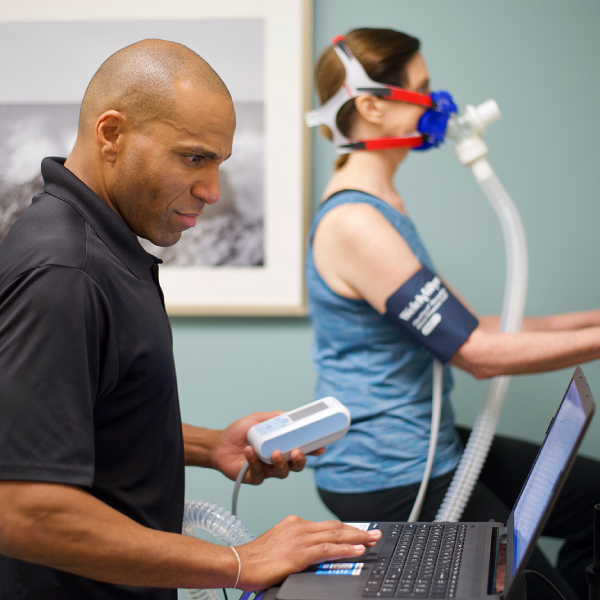The Standard Components of Fitness Evaluations
Fitness evaluations typically consist of various components that measure different aspects of physical health. Common elements of these tests include cardiovascular endurance assessments, muscle strength measurements, flexibility tests, and body composition analysis. Each of these areas provides insight into an individual’s fitness level.

Cardiovascular endurance is often tested through timed runs or step exercises. These tests assess how well the heart and lungs work together to supply oxygen during sustained physical activity. Muscle strength evaluations, on the other hand, may involve exercises like push-ups, sit-ups, or weightlifting to determine muscular capability. Flexibility tests, such as the sit-and-reach, measure the range of motion around a joint. Lastly, body composition is analyzed to understand the proportion of body fat in relation to lean body mass, often through methods like skinfold measurements or bioelectrical impedance.
These standard tests are widely recognized and provide a way to benchmark fitness. They give valuable information to guide training programs. However, when considering which of the following events is not typically included in fitness evaluations, more unconventional or sport-specific assessments might come into play, which we will explore in the following sections of this blog. While traditional fitness evaluations are essential, incorporating a yoga ball holder into training can enhance balance and core strength assessments in more unconventional fitness programs.
Uncommon Events in Fitness Testing
Fitness tests typically do not include certain events. These can relate to sport-specific skills or less common abilities. For example, backcountry navigation or survival swimming are usually not part of standard fitness evaluations. Climbing skills, dancing ability, and martial arts could also be excluded. Precision sports performances, such as archery or shooting, rarely feature in typical fitness assessments. Some tests overlook activities needing exceptional balance, agility, or hand-eye coordination. In addition, extreme endurance events like ultra-marathons are seldom part of regular fitness tests. Deciding which of the following events is not typically included in fitness evaluations depends on the aim of the assessment. Usually, these events are excluded due to their specialized nature.
Why Certain Events Are Excluded From Fitness Evaluations
When considering why certain events do not feature in standard fitness evaluations, several reasons stand out. These tests aim to assess general fitness components applicable to a broad audience. The exclusion of certain events ensures the tests remain relevant and accessible.
First, specialty skills lack relevance for a wider population. Not everyone needs backcountry navigation or martial arts for everyday fitness. Including such niche abilities would not reflect the general public’s fitness needs.
Second, logistics and safety concerns arise with certain events. For example, survival swimming requires a water body and poses a risk for non-swimmers. Standard evaluations avoid such complications by sticking to controlled, safe environments.
Third, practicality dictates what’s feasible in a standard fitness test. Time constraints and equipment availability limit the inclusion of events like ultra-marathons.
Lastly, the objective of most fitness evaluations is to provide a baseline for general health, not specialized athletic performance. They aim to inform an individual’s overall fitness rather than their capability in a specific sport or activity.
In summary, these evaluations focus on simplicity, safety, and broad applicability. They assess foundational aspects of fitness that are crucial for the majority. Choosing which of the following events is not typically included in fitness evaluations is easy when you consider these factors.
Alternative Fitness Evaluation Methods
While standard fitness evaluations cover the basics, there’s a growing interest in alternative methods. These alternatives can better suit individual needs or offer a more comprehensive view of one’s abilities:
- Functional Movement Screens (FMS) assess mobility and stability through various exercises. This method flags potential injury risks.
- High-Intensity Interval Training (HIIT) assessments can challenge cardiovascular and muscular endurance in a shorter time frame.
- Mind-body connectivity tests, like yoga or Pilates-based evaluations, measure strength, flexibility, and mental focus.
- Sport-specific tests gauge an athlete’s skills and fitness levels, tailored to their sport.
- Digital fitness trackers offer real-time data on heart rate, steps, and sleep patterns, contributing to personalized evaluations.

Alternative methods may not always be suitable for every individual. However, choosing which of the following events is not typically included in fitness evaluations could inspire including a broader range of tests to cater to diverse needs and interests. Incorporating yoga ball crunches into fitness evaluations can provide a fun and effective way to engage individuals with different interests and abilities.
The Role of Specificity in Fitness Assessments
When it comes to fitness assessments, the role of specificity cannot be understated. Specificity refers to choosing tests that are directly relevant to an individual’s fitness goals or the demands of their sport. Here’s a breakdown of why specificity is vital in fitness evaluations:
- Targeted skill measurement: Specific tests allow for an in-depth analysis of skills crucial to a sport or activity. For example, a sprinter’s fitness evaluation might focus on speed and explosive strength, not just endurance.
- Informed training programs: By pinpointing strengths and weaknesses in relevant areas, trainers can design more effective programs. This could mean incorporating drills that mimic the technical demands of a sport.
- Accurate performance indicators: General fitness tests can give a baseline, but specific assessments show true capability in a chosen area. This helps athletes understand their competitive edge or areas for improvement.
- Increased motivation: Athletes may find greater motivation when they see progress in the areas that matter most for their sport or fitness goals.
While specificity is key for athletes, it’s less crucial for the general population. They benefit more from broad assessments targeting overall health. By understanding the importance of specificity, we can better decide which of the following events is not typically included in fitness evaluations, especially when evaluating athletes or individuals with specific fitness objectives. In determining which of the following is the main goal of fitness evaluations, we must consider the varying needs of athletes versus the general population.
Balancing Comprehensive Testing with Practicality
When designing fitness evaluations, balance is key. Test creators aim for a broad scope while keeping practicality in mind. Here’s how they strike that delicate balance:
- Suitability for various fitness levels: Tests must cater to beginners and seasoned athletes alike. Complex or extreme events could exclude or discourage novices, which isn’t the goal.
- Cost-effectiveness: Keeping costs down is important. Events requiring costly equipment or venues are usually left out. Simpler exercises can assess fitness without breaking the bank.
- Time efficiency: Tests must be doable within a reasonable timeframe. Multi-day events like ultra-marathons are impractical for most settings. Shorter assessments are preferred for their ease and convenience.
- Safety concerns: Evaluations need to be safe for all. Risky events, needing expert supervision or special environments, are not typical. Safety first means sticking to controlled, safe exercises.
- Ease of administration: A fitness test must be easy to set up and conduct. Tests involving complex rules or rare equipment are not practical for regular assessments.
In short, while it’s beneficial to measure a wide range of abilities, practicality limits which events are included in fitness evaluations. This helps ensure that tests are accessible, affordable, and appropriate for a broad audience.

Fitness Evaluations and Individual Needs
When we look at fitness evaluations, we must consider individual needs as well. Each person’s body, goals, and lifestyle require unique assessments. This is why a one-size-fits-all approach can sometimes fall short. Here’s what to consider:
- Personal Health Goals: Not all aim for Olympic-level fitness. Some seek basic health, weight loss, or mobility. Evaluations should align with these personal goals.
- Current Fitness Level: A test fit for a seasoned athlete might overwhelm a beginner. Assessments should match one’s current abilities, to be fair and motivating.
- Age and Physical Conditions: Older adults or those with health issues need tests tailored to their scenarios. High-impact or strength-heavy evaluations might not be ideal for them.
- Time Availability: Busy lives can limit time for long tests. Quick, yet effective evaluations help those with tight schedules stay on track.
- Privacy Concerns: Some might shy away from group testing. Private, individual assessments can provide comfort and encourage participation.
In short, fitness evaluations must adapt to the diverse needs of individuals. This ensures that each person gets a fair, accurate reflection of their fitness. Tailoring assessments is key to supporting everyone’s unique journey to better health.
Emerging Trends in Fitness Evaluations
As fitness evolves, so do the methods of evaluation. New trends in fitness evaluations are taking shape to cater to the ever-changing needs of individuals and the landscape of health and fitness. Here’s a look at recent developments:
- Personalization through technology: Increasingly, technology plays a big role. Wearables, apps, and online platforms offer tailored fitness tracking and evaluation options.
- Integration of mental health: Mental well-being is now seen as part of overall fitness. Evaluations may include stress tests or mindfulness practices.
- Environmental adaptability: Fitness assessments include outdoor skills in response to a greater focus on outdoor activities and environmental mindfulness.
- Virtual reality assessments: VR technology enables simulated environments for safe, controlled testing of physical responses in various scenarios.
- Group dynamics analysis: Evaluations consider social aspects of fitness, such as teamwork and leadership skills in group activities.
Each emerging trend shows an expanding view of what constitutes fitness and health. By embracing these trends, fitness evaluations become more diverse, adaptable, and personalized. This reflects the understanding that fitness is not just physical; it’s a multifaceted concept embracing the entire well-being of the individual.
It’s apparent that the answer to which of the following events is not typically included in fitness evaluations? is changing. The evolving landscape of fitness evaluations makes room for innovative approaches to assess health and performance. Continuous adaptation and inclusion of new trends ensure that fitness evaluations remain relevant and effective for a broader demographic.

